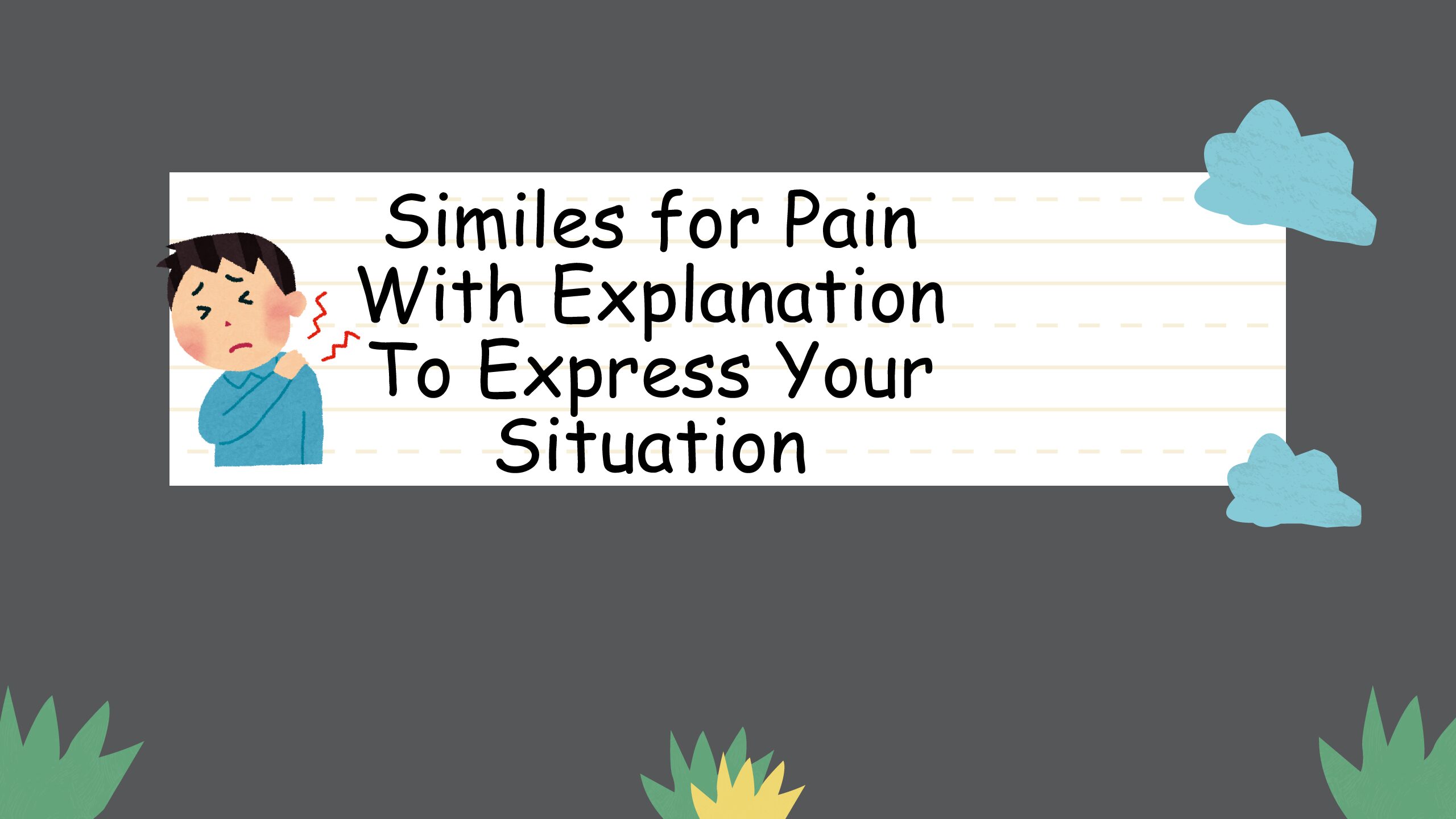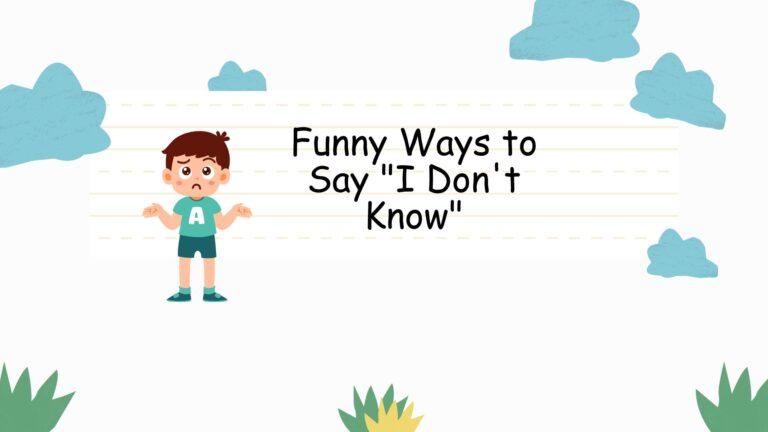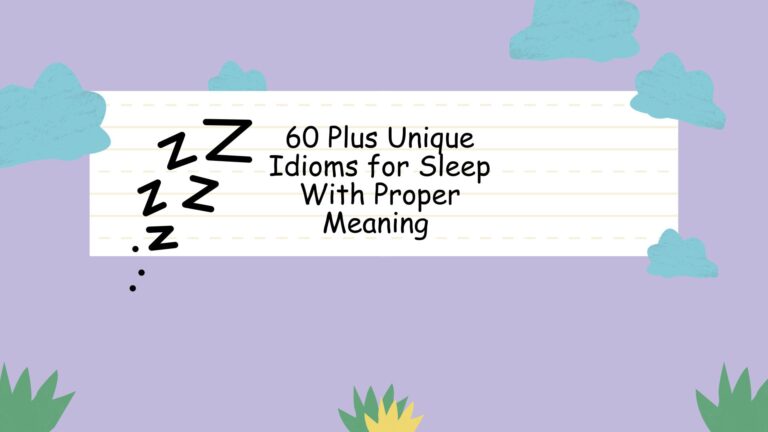
Idioms for Learning: Mastering English Through Figurative Language
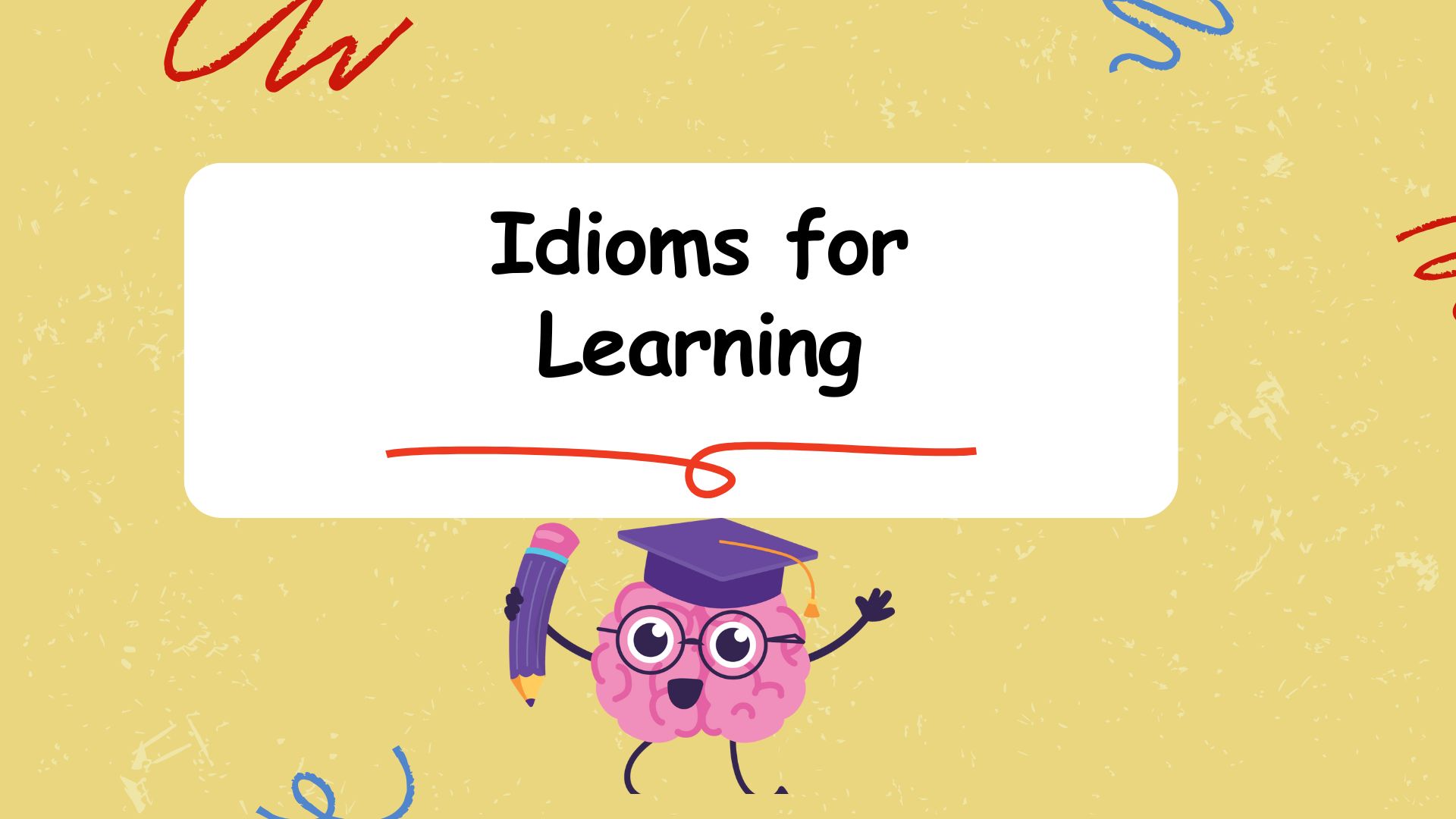
Idioms are a fascinating and essential part of the English language. They add color, depth, and nuance to communication, making conversations more engaging and relatable. However, for English language learners, idioms can be a significant challenge. Their figurative meanings are often different from the literal meanings of the individual words, making them difficult to understand and use correctly. This article is designed to provide a comprehensive guide to idioms related to learning, helping you navigate the complexities of figurative language and enhance your understanding of English. Whether you’re a beginner or an advanced learner, you’ll find valuable insights and practical exercises to improve your idiom proficiency.
Table of Contents
- Introduction
- What are Idioms?
- Structural Breakdown of Idioms
- Types and Categories of Learning Idioms
- Examples of Learning Idioms
- Usage Rules for Learning Idioms
- Common Mistakes with Learning Idioms
- Practice Exercises
- Advanced Topics in Idiom Usage
- Frequently Asked Questions
- Conclusion
Introduction
Understanding idioms is crucial for achieving fluency in English. They are frequently used in everyday conversations, literature, movies, and other forms of media. By learning idioms related to education and learning, you’ll be better equipped to comprehend spoken and written English, express yourself more naturally, and avoid potential misunderstandings. This article will break down the structure, types, and usage of learning idioms, providing you with the tools and knowledge you need to master this challenging aspect of the English language. We will explore various categories of idioms, provide numerous examples, and offer practical exercises to reinforce your learning. Get ready to dive into the world of figurative language and unlock a new level of English proficiency!
What are Idioms?
An idiom is a phrase or expression whose meaning cannot be understood from the literal meanings of its individual words. Instead, an idiom has a figurative meaning that is culturally specific and widely recognized by native speakers. Idioms are a type of figurative language, similar to metaphors and similes, but they are distinct in their fixed form and conventionalized meaning. Understanding idioms requires knowledge of cultural context and common usage, rather than simply translating the words literally. They add color, expressiveness, and sometimes humor to communication.
Idioms can be classified based on their structure, function, and the context in which they are used. Structurally, they can range from simple phrases (e.g., “hit the books”) to more complex clauses (e.g., “learn something by heart”). Functionally, idioms serve to convey meaning in a concise and often more engaging way than literal language. They can express emotions, describe situations, or provide advice. Contextually, the meaning of an idiom may vary slightly depending on the specific situation, but the core figurative meaning remains consistent. For example, the idiom “burning the midnight oil” always refers to studying or working late into the night, regardless of the specific circumstances.
Structural Breakdown of Idioms
Idioms, although seemingly simple, have a structure that contributes to their unique meaning. Understanding this structure can help learners recognize and interpret idioms more effectively. Here’s a breakdown:
- Lexical Components: These are the individual words that make up the idiom. For example, in the idiom “hit the books,” the lexical components are “hit,” “the,” and “books.”
- Syntactic Structure: This refers to the grammatical arrangement of the words in the idiom. Idioms often follow standard grammatical patterns, but their meaning deviates from the literal interpretation of that structure.
- Figurative Meaning: This is the non-literal meaning of the idiom, which is understood culturally. In “hit the books,” the figurative meaning is to study diligently.
The structure of an idiom is generally fixed, meaning that the words cannot be easily changed or rearranged without altering or losing the meaning. For example, saying “strike the books” instead of “hit the books” would not convey the same meaning. Similarly, changing the word order or adding extra words can also disrupt the idiom’s conventional usage. The stability of an idiom’s structure is what allows it to maintain its unique figurative meaning within the language.
Types and Categories of Learning Idioms
Learning idioms can be categorized based on their specific meanings and the situations in which they are commonly used. Here are a few categories:
1. Effort and Dedication
These idioms describe the amount of effort and dedication someone puts into learning.
- Hit the books: To study hard.
- Burning the midnight oil: To work or study late into the night.
- Go the extra mile: To make more effort than is expected.
2. Understanding and Comprehension
These idioms relate to grasping concepts and gaining knowledge.
- Wrap your head around something: To understand something difficult.
- Get your head around something: Similar to “wrap your head around something.”
- See the light: To finally understand something.
3. Memorization and Retention
These idioms describe the process of memorizing and retaining information.
- Learn something by heart: To memorize something perfectly.
- Know something inside out: To know something very well.
- Refresh your memory: To remind yourself of something you have forgotten.
4. Academic Performance
These idioms describe performance in school or other learning environments.
- Pass with flying colors: To pass easily and with a high score.
- Ace a test: To get a perfect score on a test.
- Skate by: To pass with the minimum effort.
5. Teaching and Guidance
These idioms relate to the act of teaching and providing guidance.
- Show someone the ropes: To teach someone how to do something.
- Learn from the school of hard knocks: To learn from difficult experiences.
- Take someone under your wing: To mentor or guide someone.
Examples of Learning Idioms
To fully grasp the meaning and usage of learning idioms, it’s helpful to see them in context. Here are several tables with examples, categorized by the types discussed above.
Effort and Dedication Idioms
This table provides examples of idioms that describe the effort and dedication someone puts into learning. Understanding these idioms can help you describe the intensity and commitment involved in studying and mastering new skills.
| Idiom | Meaning | Example Sentence |
|---|---|---|
| Hit the books | To study hard | I need to hit the books if I want to pass this exam. |
| Burning the midnight oil | To work or study late into the night | She’s been burning the midnight oil to finish her dissertation. |
| Go the extra mile | To make more effort than is expected | Our teacher always goes the extra mile to help us understand the material. |
| Put your nose to the grindstone | To work very hard and diligently | If you want to succeed in this course, you’ll have to put your nose to the grindstone. |
| Keep your shoulder to the wheel | To continue working hard, especially when things are difficult | We need to keep our shoulder to the wheel if we want to meet the deadline. |
| Leave no stone unturned | To make every possible effort | The detectives left no stone unturned in their investigation. |
| Go all out | To make a maximum effort | She went all out to prepare for her presentation. |
| Give it your all | To put all your effort into something | Just give it your all and see what happens. |
| Work your fingers to the bone | To work extremely hard | He worked his fingers to the bone to provide for his family. |
| Sweat blood | To work extremely hard and suffer a lot | I sweated blood to get this project done on time. |
| Pull out all the stops | To do everything possible to succeed | They pulled out all the stops to win the competition. |
| Go the whole hog | To do something completely or thoroughly | If you’re going to learn a new language, you might as well go the whole hog and immerse yourself in the culture. |
| Be up to your ears in | To be very busy or deeply involved in something | I am up to my ears in studying for the final exams. |
| Be snowed under | To have too much work to do | I am completely snowed under with assignments this week. |
| Be swamped | To be overwhelmed with too much to do | The teachers are swamped with grading papers. |
| Be rushed off your feet | To be extremely busy | The students were rushed off their feet preparing for their presentations. |
| Be buried in | To be deeply involved or overwhelmed with something | She was buried in books for her research project. |
| Be tied up | To be busy and unable to do other things | I am tied up with meetings all day. |
| Be up to your eyeballs | To be extremely busy with something | I am up to my eyeballs in paperwork. |
| Be stretched | To be forced to do more than you can handle easily | The team is stretched thin due to the increased workload. |

Understanding and Comprehension Idioms
This table focuses on idioms that describe the process of understanding and comprehending concepts. These idioms are essential for discussing learning progress and challenges.
| Idiom | Meaning | Example Sentence |
|---|---|---|
| Wrap your head around something | To understand something difficult | I’m trying to wrap my head around this complex math problem. |
| Get your head around something | To understand something difficult | It took me a while to get my head around the new software. |
| See the light | To finally understand something | After the teacher explained it again, I finally saw the light. |
| Click | To suddenly understand something | Suddenly, everything clicked, and I understood the concept. |
| Dawn on someone | To become clear to someone | It finally dawned on me that I had been approaching the problem incorrectly. |
| Sink in | To be fully understood or realized | It will take some time for all the new information to sink in. |
| Get the hang of something | To learn how to do something properly | Once you get the hang of coding, it becomes much easier. |
| Grasp the nettle | To tackle a difficult task with determination | You have to grasp the nettle and face your fears to succeed. |
| Put two and two together | To draw an obvious conclusion | When she mentioned the trip, I put two and two together and realized it was a surprise party. |
| Read between the lines | To understand the hidden meaning | You have to read between the lines to understand what he really meant. |
| Get the picture | To understand the situation | I think I get the picture now; thank you for explaining it. |
| Get the drift | To understand the general meaning | I got the drift of the lecture, even though I missed some details. |
| On the same wavelength | To understand each other | The study group members were on the same wavelength and worked well together. |
| Have a clue | To know something | I don’t have a clue about what he is talking about. |
| Be in the know | To have information that most people don’t have | She is in the know about all the latest developments in the field. |
| A penny for your thoughts | A way of asking someone what they are thinking | You look deep in thought; a penny for your thoughts? |
| A light bulb moment | A sudden realization or understanding | I had a light bulb moment when I realized the solution to the problem. |
| Connect the dots | To understand how different pieces of information are related | The professor helped us connect the dots between the different theories. |
| Get to the bottom of something | To discover the truth about something | The investigator is trying to get to the bottom of the mystery. |
| Piece something together | To gradually understand something by combining different pieces of information | After reading several articles, I pieced together the full story. |
Memorization and Retention Idioms
This table presents idioms that describe the process of memorizing and retaining information. These expressions are useful for discussing study habits and memory skills.
| Idiom | Meaning | Example Sentence |
|---|---|---|
| Learn something by heart | To memorize something perfectly | The actor had to learn his lines by heart for the play. |
| Know something inside out | To know something very well | She knows that book inside out; she’s read it dozens of times. |
| Refresh your memory | To remind yourself of something you have forgotten | Let me refresh your memory with a few key points from the lecture. |
| Ring a bell | To sound familiar | That name rings a bell, but I can’t quite place where I’ve heard it before. |
| Stick in your mind | To be easily remembered | That song is going to stick in my mind all day. |
| Come to mind | To be remembered | The answer just came to mind as soon as the question was asked. |
| At the top of your head | From memory, without needing to look it up | I can’t recall the exact date at the top of my head. |
| Cross your mind | To occur to you | It never crossed my mind that he would forget his passport. |
| Jog your memory | To help someone remember something | Let me show you some pictures to jog your memory. |
| Lose track of | To forget or be unaware of something | I lost track of time while I was reading that fascinating book. |
| Bear in mind | To remember something important | Bear in mind that the deadline is next Friday. |
| Keep in mind | To remember something | Keep in mind that you need to bring your ID. |
| Commit to memory | To memorize something deliberately | The students were instructed to commit the list to memory. |
| Fix something in your mind | To remember something clearly | I need to fix those dates in my mind so I don’t forget. |
| Store away in your memory | To remember something for future use | I stored away that piece of advice in my memory for future reference. |
| Plant in your mind | To cause someone to start thinking about something | The teacher planted the idea in our minds. |
| Memorize word for word | To learn something exactly as it is written or spoken | The student memorized the poem word for word. |
| Recollect | To remember something | I can’t recollect where I put my keys. |
| Recall | To bring back to mind | I can’t recall the name of the movie. |
| Brush up on | To improve your knowledge of something you have partly forgotten | I need to brush up on my Spanish before the trip. |
Academic Performance Idioms
This table provides idioms that describe performance in school or other learning environments. These idioms are helpful for discussing grades, tests, and overall academic success.
| Idiom | Meaning | Example Sentence |
|---|---|---|
| Pass with flying colors | To pass easily and with a high score | She passed the exam with flying colors. |
| Ace a test | To get a perfect score on a test | He aced the test without even studying much. |
| Skate by | To pass with the minimum effort | He managed to skate by in the class, but he didn’t really learn anything. |
| Learn a lesson | To learn something from an experience, often a negative one | She learned a lesson about the importance of studying after failing the quiz. |
| Back to basics | Returning to the fundamental principles of a subject | The teacher decided to go back to basics to help the students understand the core concepts. |
| Make the grade | To reach the required standard | She worked hard to make the grade in her physics class. |
| Top of the class | The best student in the class | He was always at the top of the class in math. |
| Underachiever | Someone who performs below their potential | The teacher worried that he was an underachiever because he didn’t try hard enough. |
| Bright spark | A clever or intelligent person | She is a bright spark and always has interesting ideas. |
| Copycat | Someone who copies another person’s work | The teacher accused him of being a copycat after seeing the identical assignment. |
| Play truant | To stay away from school without permission | The boy decided to play truant because he didn’t want to take the test. |
| Drop out | To leave school or college before finishing | He decided to drop out of college to pursue his music career. |
| Goof off | To waste time instead of working or studying | The students were goofing off instead of paying attention in class. |
| Teacher’s pet | A student who is liked by the teacher | She was the teacher’s pet and always got special treatment. |
| Bookworm | Someone who loves reading | He is a real bookworm and spends all his free time in the library. |
| Brainy | Intelligent | She is very brainy and always gets good grades. |
| Cut class | To skip a class | The students decided to cut class to go to the beach. |
| Flunk out | To fail and be forced to leave school | He was in danger of flunking out if he didn’t improve his grades. |
| Get a grip | To take control of your emotions or actions | You need to get a grip and focus on your studies. |
| Keep your head above water | To manage to survive a difficult situation | I’m just trying to keep my head above water with all these assignments. |
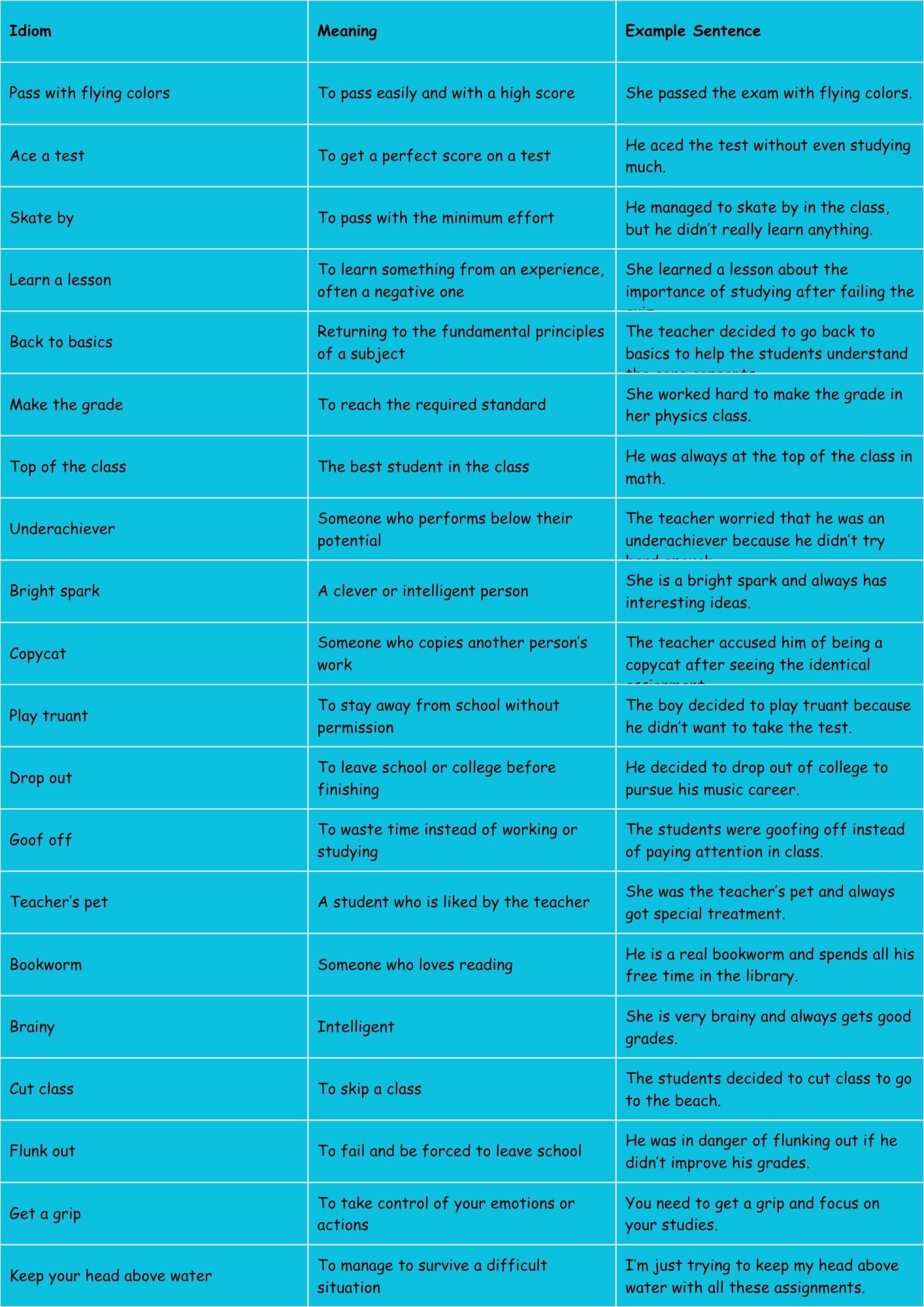
Usage Rules for Learning Idioms
Using idioms correctly requires understanding their specific meanings and the contexts in which they are appropriate. Here are some general rules to follow:
- Context Matters: Always consider the context of the conversation or writing when using an idiom. An idiom that is appropriate in one situation may be inappropriate in another.
- Audience Awareness: Be mindful of your audience. If you’re speaking to someone who is not a native English speaker, it may be best to avoid using idioms altogether, or to explain them clearly.
- Grammatical Structure: Idioms often have a fixed grammatical structure, so it’s important to use them exactly as they are. Avoid changing the word order or adding extra words.
- Overuse: Don’t overuse idioms. While they can add color and expressiveness to your language, using too many idioms can make your speech sound unnatural or forced.
While idioms generally have a fixed structure, some idioms allow for slight variations without changing their meaning. For example, you can say either “wrap your head around something” or “get your head around something” with essentially the same meaning. However, it’s important to be aware of which idioms allow for such variations and which do not. When in doubt, it’s best to stick to the standard form of the idiom.
Common Mistakes with Learning Idioms
One of the most common mistakes when learning idioms is interpreting them literally. Here are some examples of correct and incorrect usage:
| Incorrect | Correct | Explanation |
|---|---|---|
| “I hit the books physically.” | “I need to hit the books if I want to pass the exam.” | The literal interpretation of “hit the books” is incorrect. The idiom means “to study hard.” |
| “She burned the oil at midnight.” | “She’s been burning the midnight oil to finish her dissertation.” | The literal interpretation of “burning the midnight oil” is incorrect. The idiom means “to work or study late into the night.” |
| “He wrapped his head with a towel.” | “I’m trying to wrap my head around this complex math problem.” | The literal interpretation of “wrap your head around” is incorrect. The idiom means “to understand something difficult.” |
| “I saw a light outside.” | “After the teacher explained it again, I finally saw the light.” | The literal interpretation of “see the light” is incorrect. The idiom means “to finally understand something.” |
| “I learned the poem by my heart.” | “The actor had to learn his lines by heart for the play.” | The correct phrase is “learn something by heart,” not “by my heart.” |
Another common mistake is using idioms in inappropriate contexts. For example, using a casual idiom in a formal presentation could make you sound unprofessional. It’s important to choose idioms that are appropriate for the specific situation and audience.
Practice Exercises
Test your understanding of learning idioms with these practice exercises. Choose the correct idiom to complete each sentence.
Exercise 1: Fill in the Blanks
Instructions: Choose the correct idiom from the list to complete each sentence.
(hit the books, burning the midnight oil, wrap your head around, see the light, learn by heart)
| Question | Answer |
|---|---|
| 1. I have a big test tomorrow, so I need to ________ tonight. | hit the books |
| 2. She’s been ________ to finish her thesis on time. | burning the midnight oil |
| 3. I’m trying to ________ this complicated physics equation. | wrap your head around |
| 4. After the professor explained it several times, I finally ________. | saw the light |
| 5. The actor had to ________ his lines for the play. | learn by heart |
| 6. To succeed in this course, you’ll need to ________ and dedicate yourself to studying. | hit the books |
| 7. Despite the challenges, she’s ________ to complete her degree. | burning the midnight oil |
| 8. It took me a while to ________ the concept of quantum mechanics. | wrap your head around |
| 9. It wasn’t until he failed the exam that he finally ________ and realized he needed to study harder. | saw the light |
| 10. The student was determined to ________ the multiplication table. | learn by heart |
Exercise 2: Multiple Choice
Instructions: Choose the correct meaning of the idiom in each sentence.
| Question | Options | Answer |
|---|---|---|
| 1. He passed the exam with flying colors. What does “with flying colors” mean? | a) He barely passed. b) He passed easily and with a high score. c) He failed the exam. | b) He passed easily and with a high score. |
| 2. She knows that subject inside out. What does “inside out” mean? | a) She knows the subject superficially. b) She doesn’t know the subject at all. c) She knows the subject very well. | c) She knows the subject very well. |
| 3. The teacher showed him the ropes. What does “showed him the ropes” mean? | a) Tied him up with ropes. b) Taught him how to do something. c) Ignored him completely. | b) Taught him how to do something. |
| 4. After many struggles, they finally saw the light. What does “saw the light” mean? | a) They went outside. b) They finally understood something. c) They turned on a light. | b) They finally understood something. |
| 5. He had to learn the poem by heart. What does “by heart” mean? | a) He learned the poem reluctantly. b) He learned the poem perfectly from memory. c) He learned only part of the poem. | b) He learned the poem perfectly from memory. |
| 6. The student decided to hit the books. What does “hit the books” mean? | a) To physically hit books. b) To start studying hard. c) To throw books away. | b) To start studying hard. |
| 7. She’s been burning the midnight oil to finish her thesis. What does “burning the midnight oil” mean? | a) She’s been starting fires at midnight. b) She’s been working or studying late into the night. c) She’s been wasting time. | b) She’s been working or studying late into the night. |
| 8. I’m trying to wrap my head around this concept. What does “wrap my head around” mean? | a) To physically wrap something around your head. b) To try to understand something difficult. c) To ignore something. | b) To try to understand something difficult. |
| 9. He managed to skate by in the class. What does “skate by” mean? | a) To fail the class. b) To pass with minimum effort. c) To excel in the class. | b) To pass with minimum effort. |
| 10. The teacher showed the new student the ropes. What does “show the ropes” mean? | a) To tie the new student up. b) To teach the new student how things work. c) To ignore the new student. | b) To teach the new student how things work. |
Advanced Topics in Idiom Usage
For advanced learners, delving deeper into the subtleties of idiom usage can significantly enhance their fluency and understanding of English. One advanced topic is the historical and cultural context of idioms. Many idioms have their roots in specific historical events, cultural practices, or literary works. Understanding these origins can provide a richer appreciation of the idiom’s meaning and usage. For example, the idiom “bury the hatchet” comes from a Native American tradition of symbolically burying a hatchet to signify the end of a conflict.
Another advanced topic is the use of idioms in different dialects and varieties of English. While many idioms are widely used across different English-speaking regions, some idioms are specific to certain dialects or regions. Being aware of these regional variations can help you avoid misunderstandings and communicate more effectively with people from different backgrounds. Furthermore, advanced learners can explore the creative use of idioms in literature and media. Writers and speakers often play with idioms, twisting their meanings or combining them in unexpected ways to create humor, emphasis, or other rhetorical effects.
Frequently Asked Questions
- Why are idioms so difficult to learn?Idioms are difficult to learn because their meanings are figurative and not literal. This means that you can’t simply understand an idiom by translating the individual words; you need to know the culturally specific meaning of the entire phrase.
- How can I improve my idiom knowledge?The best way to improve your idiom knowledge is through exposure and practice. Read widely, listen to English conversations, watch movies and TV shows, and pay attention to how native speakers use idioms. Also, make a habit of looking up unfamiliar idioms and practicing using them in your own speech and writing.
- Are idioms the same in all English-speaking countries?No, idioms can vary significantly between different English-speaking countries and regions. Some idioms are widely used across all varieties of English, while others are specific to certain dialects or regions. It’s important to be aware of these regional variations to avoid misunderstandings.
- Is it okay to use idioms in formal writing?It depends on the context and audience. In general, idioms are more appropriate in informal writing and conversation than in formal writing. However, some idioms are widely accepted and can be used in formal writing if they are appropriate for the topic and tone.
- How can I avoid making mistakes when using idioms?The best way to avoid making mistakes is to be aware of the specific meaning and usage of each idiom. Don’t assume that you understand an idiom based on the literal meanings of the words. Also, pay attention to how native speakers use idioms and try to emulate their usage.
- What’s the difference between idioms and metaphors?Both idioms and metaphors are types of figurative language, but they differ in their form and usage. A metaphor is a figure of speech that directly compares two unlike things, while an idiom is a fixed phrase with a non-literal meaning. Metaphors are often more flexible and creative, while idioms are more fixed and conventionalized.
- How can I tell if a phrase is an idiom or just a regular phrase?If the meaning of a phrase is different from the literal meanings of its individual words, and if the phrase is widely recognized and used by native speakers, then it’s likely an idiom. You can also consult a dictionary of idioms to confirm whether a phrase is
an idiom.
Conclusion
Mastering idioms is a significant step towards achieving fluency and a deeper understanding of the English language. By understanding the structure, types, and usage rules of learning idioms, you can enhance your comprehension, express yourself more effectively, and avoid common mistakes. Remember to practice regularly, pay attention to context, and be mindful of your audience. With dedication and consistent effort, you can unlock the richness and expressiveness of English idioms and take your language skills to the next level. Keep learning, keep practicing, and embrace the colorful world of figurative language!

